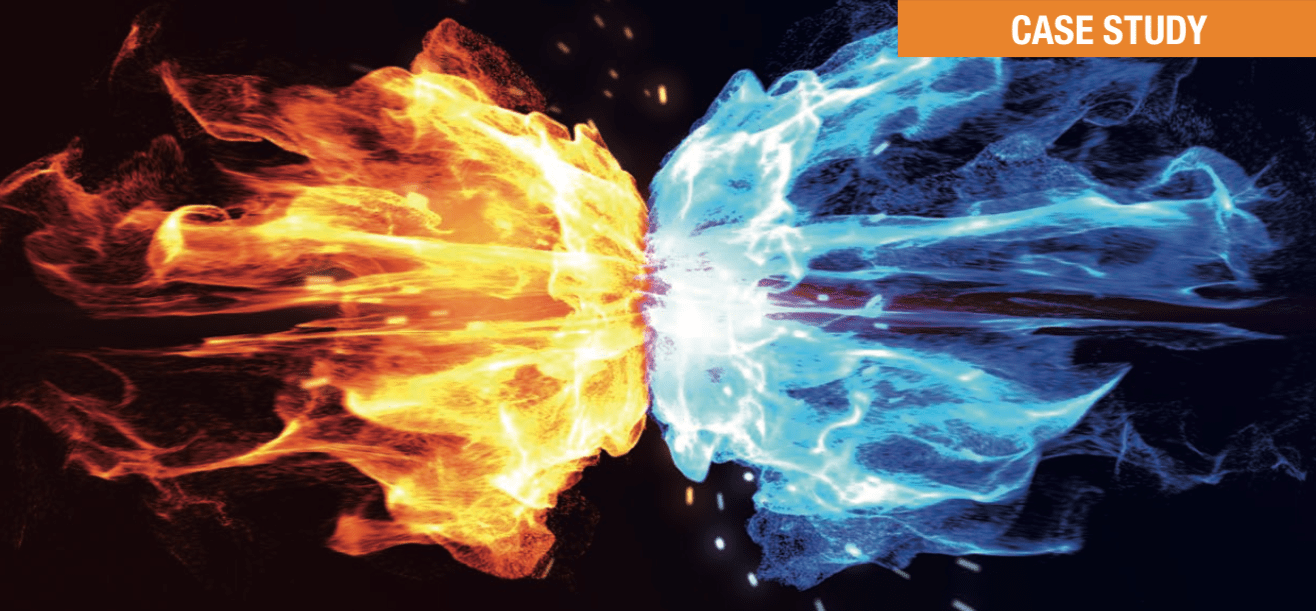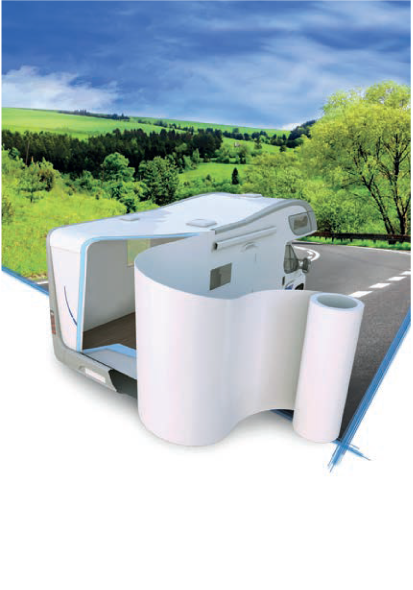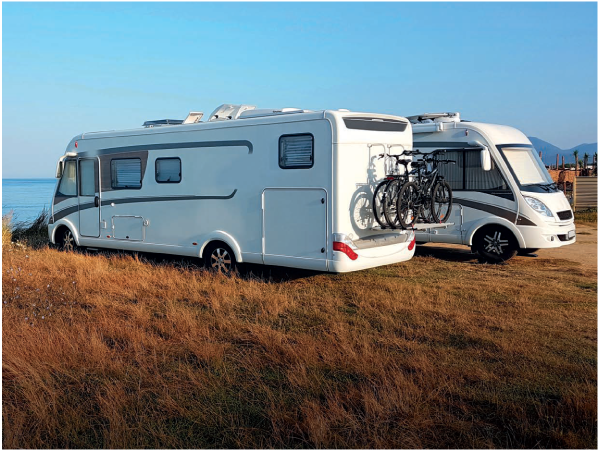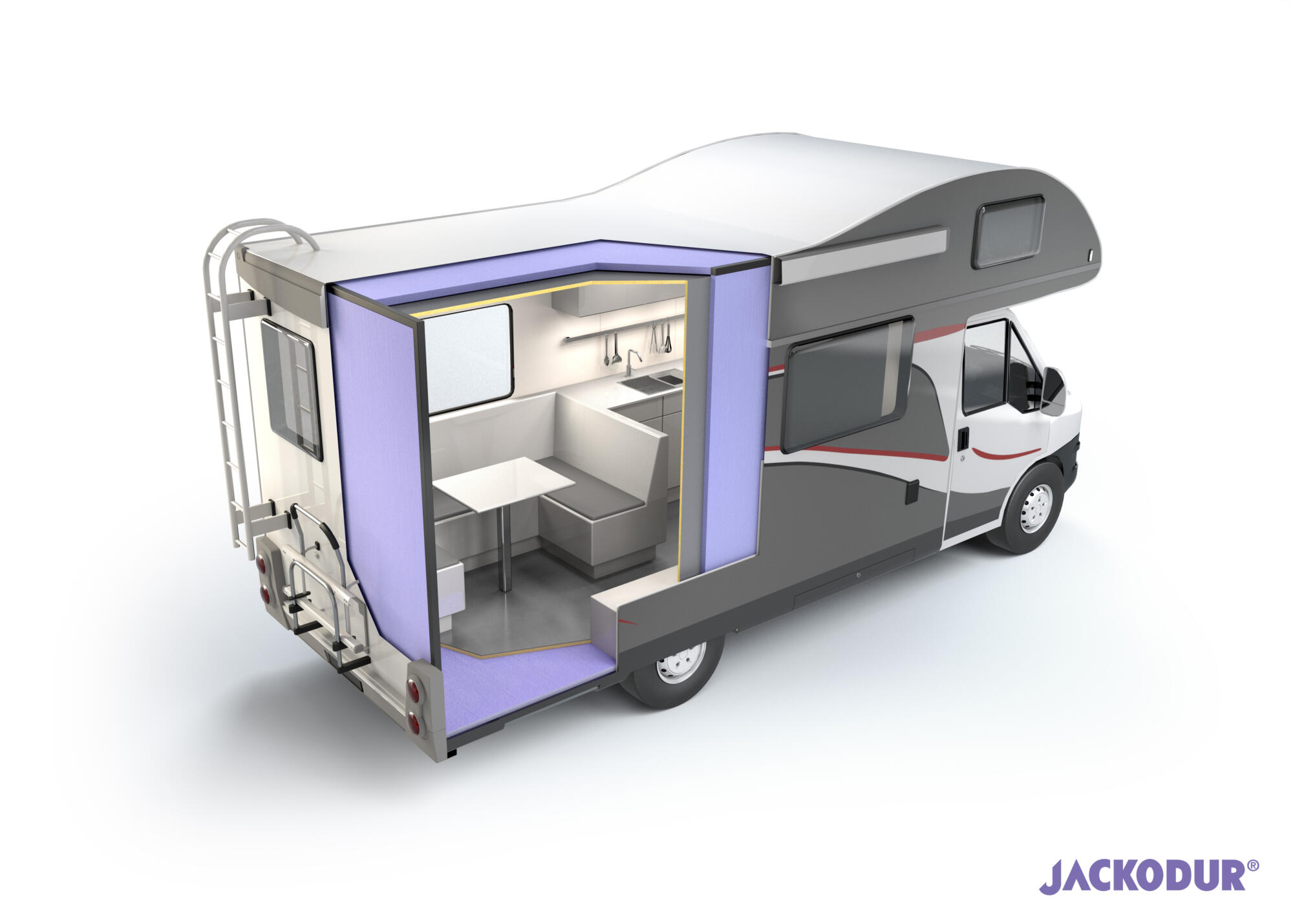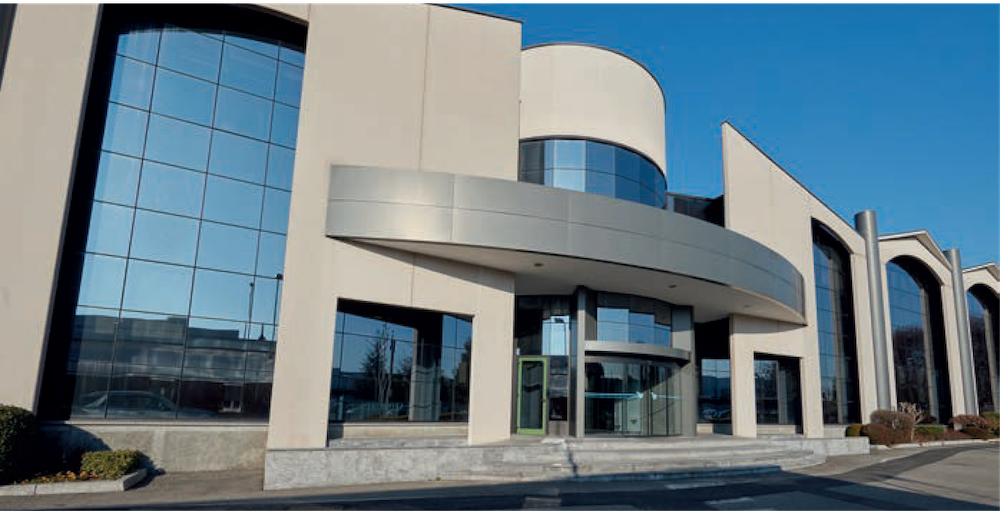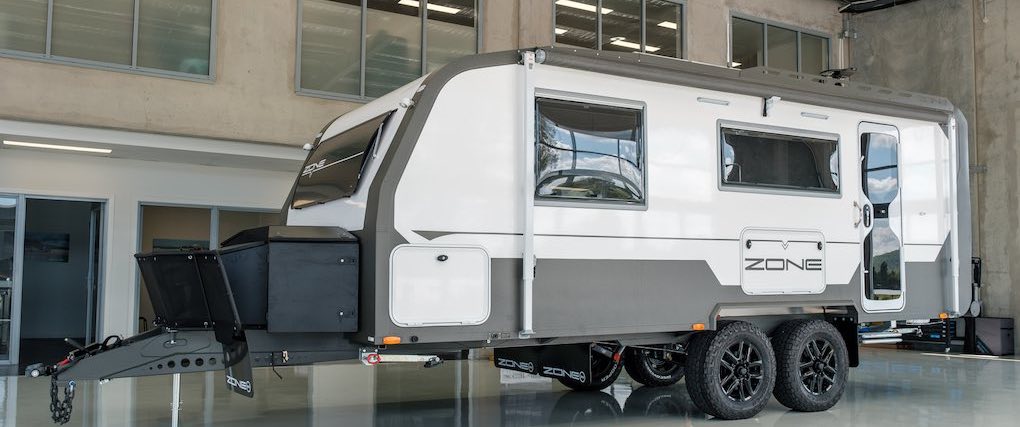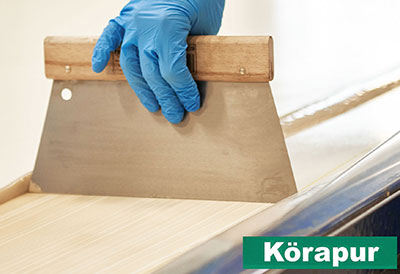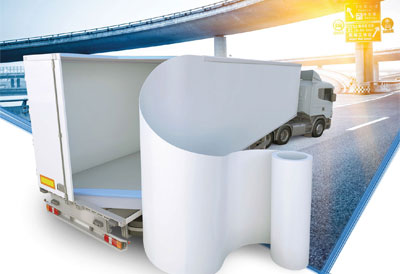Buyer confusion over ‘faux’ composite caravans
Composite caravans are all the rage in the Australian caravan industry right now, offering a range of benefits over traditional ‘stick and tin’ construction including lighter weight, improved insulation, and better water and impact resistance. However, buyers should be aware that not all composite caravans are built the same, with some flat-sided ‘glossy’ vans misleadingly promoted as ‘composite’ construction when they’re still built primarily with a separate frame and thin external cladding. That’s the opinion of Luke Davies, managing director of Melbourne-based Liner Supply which distributes quality European-sourced materials used in the manufacture of composite sandwich panels supplied to a number of Australian RV manufacturers.
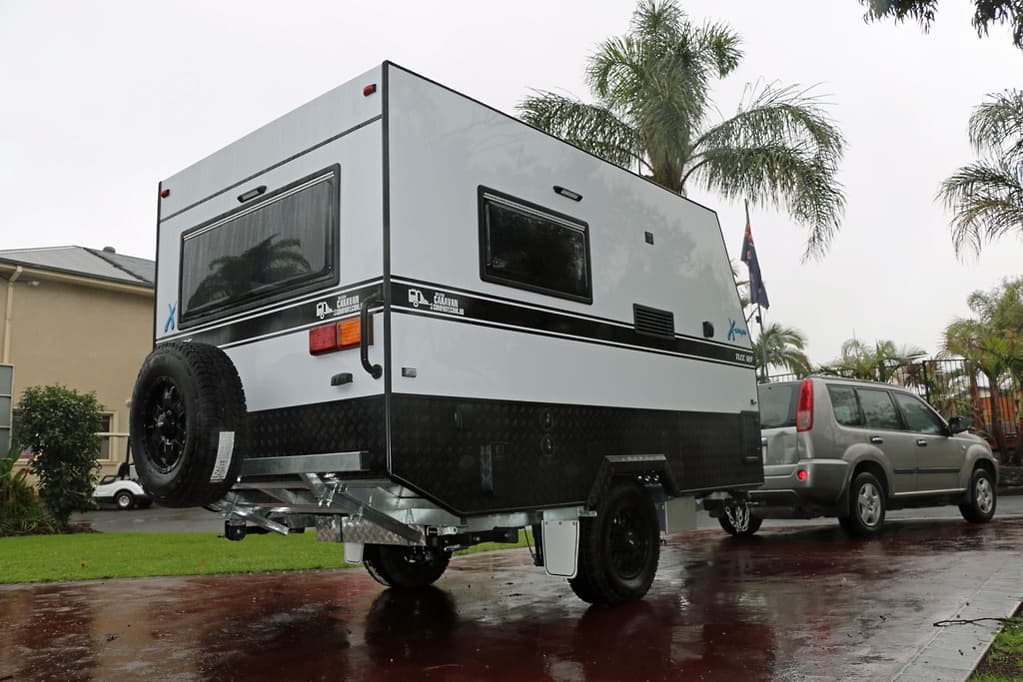
Looks can be deceiving when it comes to ‘composite’ caravan construction
“You hear some sales people at shows spruiking a composite caravan, when it’s really a 3mm thick aluminium composite panel that’s adhered to a traditional side wall frame, so I think calling it a composite caravan can be misleading,” he explained. “Externally, these smooth-sided vans often look quite similar (as those constructed withsandwich panels) but remove the layers and that’s where you start to see the difference between the construction methods.” Davies said the deception is similar to when some manufacturers would falsely claim a timber-frame caravan as ‘fully insulated’.
Avida is one of few Aussie manufacturers that makes their own laminated panels
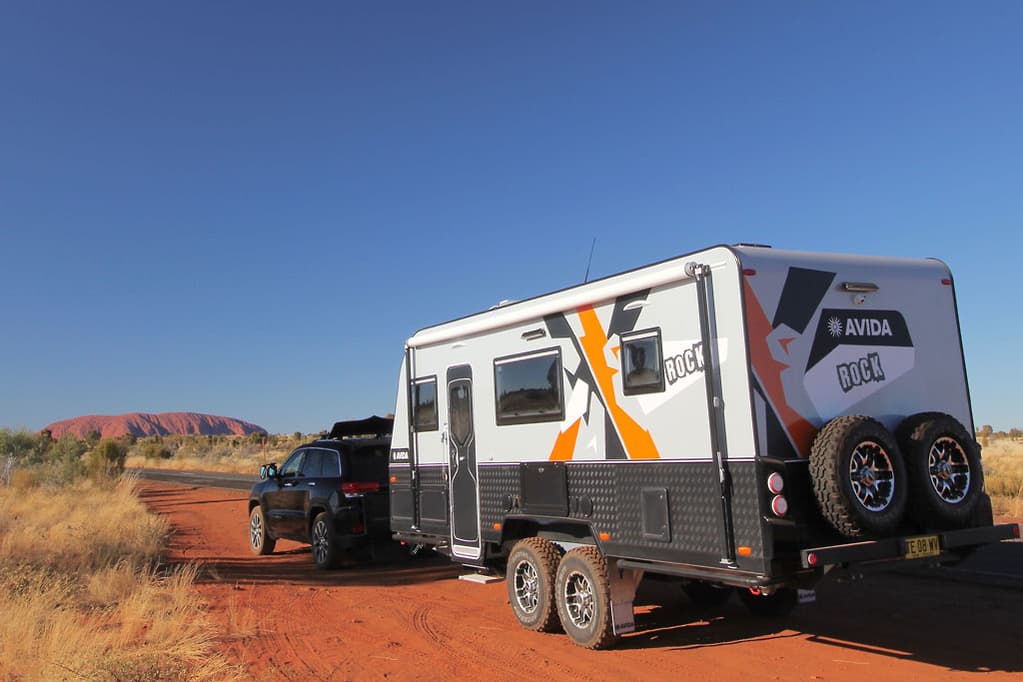
“It’s like back to the days when manufacturers used to have a sticker on the side of the caravan that said ‘fully insulated’ or ‘100 per cent insulated’ but it wasn’t a fact,” he said. “Look under the external cladding, and there’s not too many traditional-built caravans that are fully insulated. “It’s misleading when companies spruik a ‘composite’ caravan when all it is, is textured plywood internal sheet stapled to a timber frame with pieces of expanded polystyrene placed in between the frame and cladded with a 3mm external sheet.” Davies said a composite caravan should, at the very least have insulated sandwich panels for the walls and roof – usually around 30-35mm thick but sometimes thicker or thinner depending on requirements and whether high density inserts are used to support items like roof-top air-conditioners.
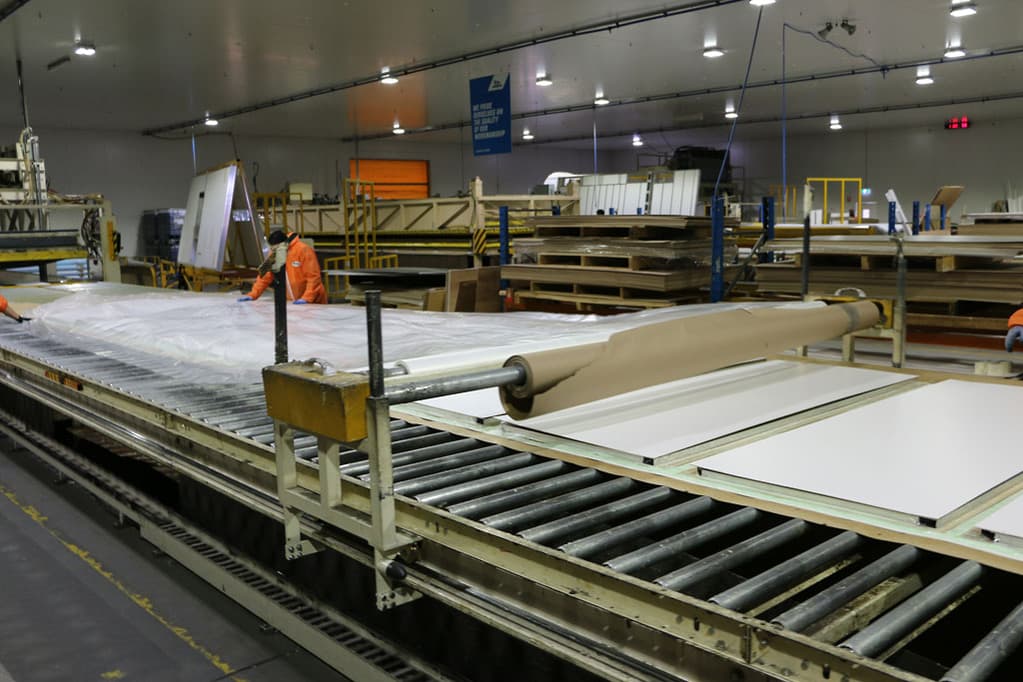
Jayco’s laminated panel manufacturing plant is temperature controlled to improve quality
“For me the definition of a composite caravan or RV is a build that’s been made up of composite sandwich panels; where the floor, wall and roof panels consist of an internal and external face sheet and a core which has been laminated together,” he said. “Unfortunately there are many variations of that within the industry, so it can be confusing for buyers.” He said composite sandwich panels can consist of a variety of substrates including fibreglass, aluminium, reinforced thermoplastic or plywood face sheets, extruded polystyrene (XPS) or expanded polystyrene (EPS) foam cores, and reinforcements and frames in polyethylene terephthalate (PET), polyvinyl chloride (PVC), polyurethane (PU), aluminium, timber or plywood.
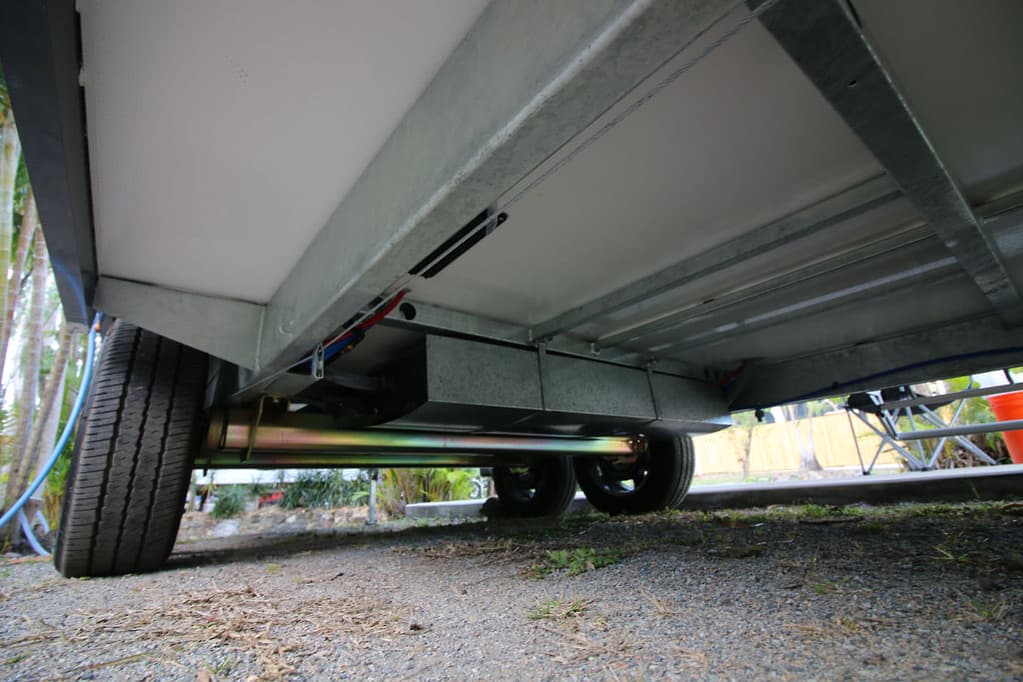
Jayco’s laminated panel manufacturing plant is temperature controlled to improve quality
However, there are good reasons for any caravan classified as “full composite” to feature timber-free wall, roof and floor sandwich panels. “The key benefit of a composite floor is eliminating any wood, which potentially rots out over time,” he explained. “A (stiffer) composite floor panel is also able to span greater distances than the traditional 12mm plywood; providing greater structural strength and allowing manufacturers the opportunity to use a lighter chassis to reduce the overall weight of the RV.”
Avan uses aluminium rather than fibreglass sheeting for its in-house produced laminated panels
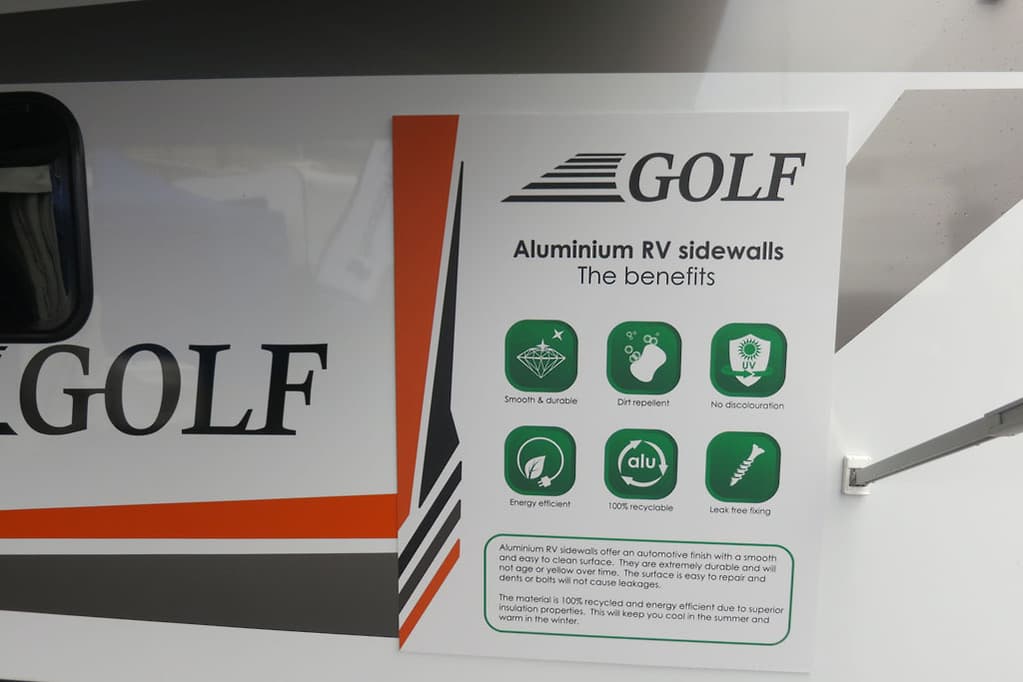
Only a handful of local RV manufacturers produce their own laminated panels in-house, while others source the panels from specialist composite panel manufacturers. Few Australian manufacturers build ‘full composite’ or monocoque-style caravans, which is the preferred style in Europe. Davies said there are “pros and cons” of the different methods used to manufacture laminated panels but to prevent issues like delamination, it’s paramount high quality raw materials are used and critical steps are followed during the laminating process.
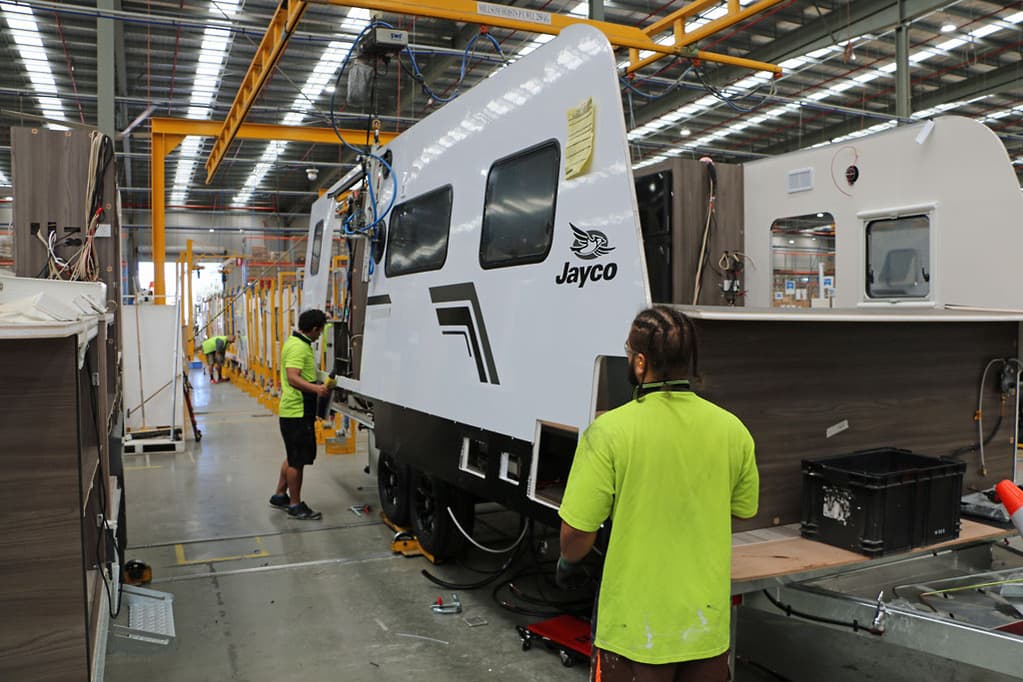
Jayco uses fibreglass sandwich wall and roof panels and a plywood floor on many of its caravans
For example, Liner Supply offers a high-quality extruded polystyrene XPS core material that makes it easier to produce a consistent panel. “The key advantage of the extruded polystyrene is much tighter tolerances, which can have an impact on the end finish of the panel when laminated,” he said.
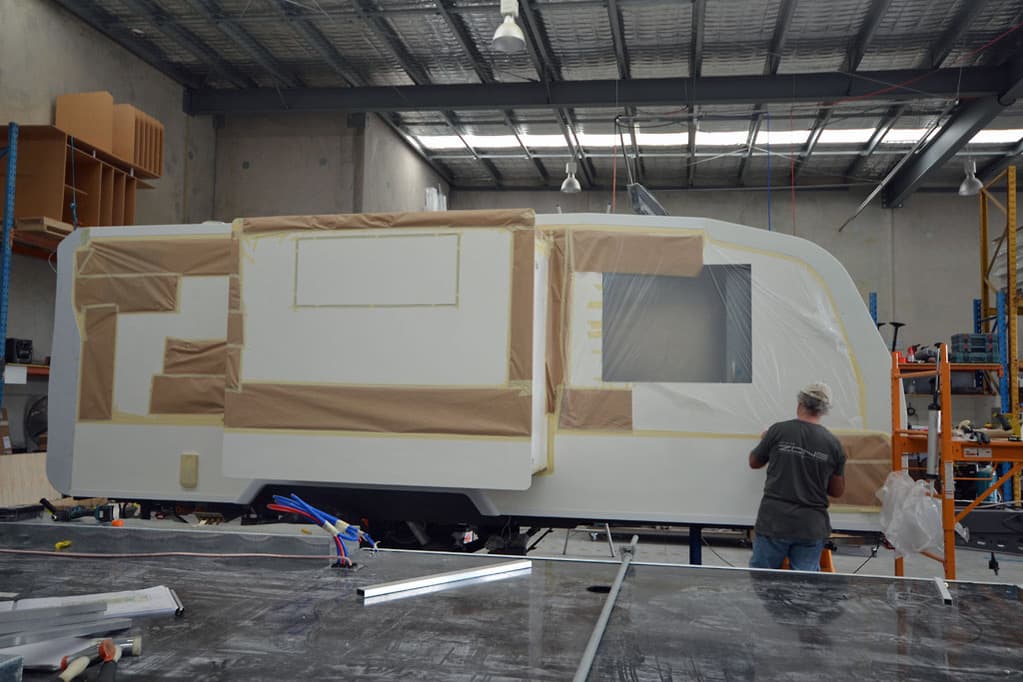
Queensland’s Zone RV is leading the way in full composite caravan construction
Another advantage of the extruded polystyrene is that it “doesn’t take up water like expanded polystyrene, and offers better thermal efficiencies”. “UV degradation is a big one; Australian conditions are quite harsh and a poorly manufactured laminate will start to deteriorate and fade,” he said. While there’s no doubt more Australian manufacturers will transition from traditional caravan construction to full composite in the years ahead, he believes there will always be demand for old-school ‘cladded’ caravans with timber or aluminium frames. Before making the often costly move to the different ‘in-to-out’ assembly process required for full composite construction, local manufacturers are also likely to look to short-term ‘hybrid’ solutions like composite-style insulated wall frames used with traditional external cladding.

